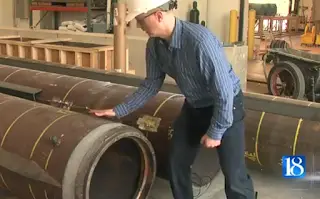The story is from West Indiana United States where Researchers are in the process of a breakthrough in the construction of bridges.
When Indiana Department of Transportation (INDOT) and the city made the decision to replace the eastbound bridge over the Wabash (Wabash is a city in Noble Township, Wabash County, Indiana, United States.), they were looking into possible foundation solutions due to the type of soil.
That’s when Purdue Civil Engineering professor and researcher Rod Salgado got to work on an open-ended pipe pile – rather than the typical rounded pipe.
“INDOT hasn’t really used these larger diameter pipe piles,” Salgado said. “Piles this large are common in the offshore industry. You build oil production platforms and things like that.”
So what makes this bridge so special?
Salgado said it’s because of the soil profile where the bridge is being constructed. There is a lot of gravel and cobble, and a rounded pipe pile would be much more difficult.
“You can drive them into the ground more easily than with a pile with a closed tip,” Salgado said. “The issue is that when you go to design them, try to figure out how much load they can take. The fact that they are open-ended created complexities.”
That’s what Salgado and his team are continuing to research. They are perfecting their craft and testing how much force these piles can take.
Like Us on Facebook!
“We are load testing these piles,” he said. “So, that means we are applying load on these piles against a reaction frame, and we are studying how the piles respond to the loading as you increase the load.”
Subscribe Us on YouTube!
He said there have been a few projects around the country where this technique is done, but he is hoping his research and results from the Wabash Bridge constuction help start a new trend.
“There aren’t a lot. I think that may be because we don’t yet have the methods to estimate the loads as accurate as we would like,” Salgado said. “As we understand that better, I think the use might go up significantly.”
Salgado said this technique is the most economical solution for this project. He said right now, it is a case-by-case basis.
Watch the Video Here:
[youtube https://www.youtube.com/watch?v=ZmweXMpBzZ0&w=560&h=315]


















